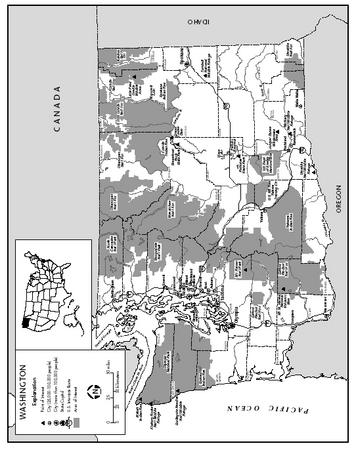Washington
Environmental protection
The mission of the Department of Ecology (established in 1970) is to protect, preserve, and enhance Washington's environment and promote the wise management of its air, land, and water for the benefit of current and future generations. To fulfill this mission, the Department of Ecology: administers permit and authorization programs which ensure that pollutant discharges, waste management and clean-up, and resource uses are properly controlled; provides technical assistance on pollution control or resource development issues; and provides financial assistance through grant and loan programs to local governments for waste water and solid waste facilities. The Department of Ecology also reviews federal and state actions and plans for consistency with state laws and regulations for natural resource protection, maintains an ongoing program to monitor the quality of air and water resources, hazardous waste management, and toxic and nuclear clean-up actions; and reviews local government-permitting actions relating to the state's shorelands and to solid waste facilities. Furthermore, the Department of Ecology directly administers an automobile inspection program for the Seattle, Vancouver (Washington), and Spokane areas, an Estuarine Sanctuary program at Padilla Bay, the Conservation Corps employment program, and the Youth Corps litter control program.
Among other state agencies with environmental responsibilities are the State Conservation Commission, Environmental Hearings Office, State Parks and Recreation Commission, Department of Health, Department of Fish and Wildlife, and Department of Natural Resources.
Principal air pollutants in the state are particulate emissions, carbon monoxide, hydrocarbons, lead, and dioxides of nitrogen. Fuel combustion and industrial processes are responsible for most of the first two pollutants, transportation (especially the automobile) for most of the last four. Significant progress has been made since 1988 in reducing the amount of pollutants released to the air. In 1988, the total number of days air quality did not meet health standards was 25. In 1994, the total number of days was 15, and by 1999, the total had been reduced to seven days. In 1990, more than two million people were exposed to air that violated federal standards, but by 1999, the number had been reduced to 112,000.

More than 6,500 sites in Washington are suspected or confirmed to be contaminated with toxic chemicals. At the Hanford Nuclear Site alone, contamination includes 1,500 places where radioactive and chemical wastes were disposed to the soil. From 1990–2002, clean-up was completed (nearly completed) at a majority of the high-priority sites.
Washington state has one of the highest overall recycling rates in the United States. In the mid-1980s, Bellingham began the state's first curbside recycling collection program. Seattle soon started its own program after being forced to close a municipal landfill and facing fierce opposition to construction of a garbage incinerator. In 1989, the state legislature passed the Waste-Not Washington Act, which defined a clear solid-waste management strategy and set a recycling goal of 50%; while this had not been achieved as of 2003, the rate of 40% was reported in in 1995, with 37% reported for 2001. (The national average is 30%.) In 2003, Washington had 236 hazardous waste sites listed in the Environmental Protection Agency's database, 47 of which were on the National Priorities List. In 2001, Washington received $71,549,000 in federal grants from the Environmental Protection Agency; EPA expenditures for procurement contracts in Washington that year amounted to $6,721,000.